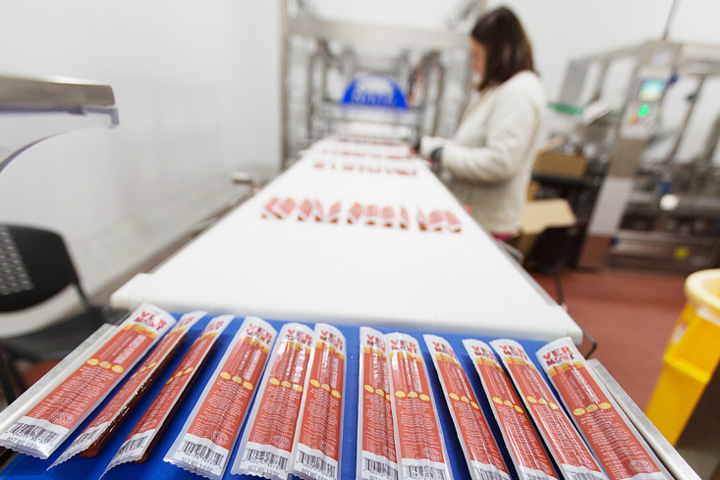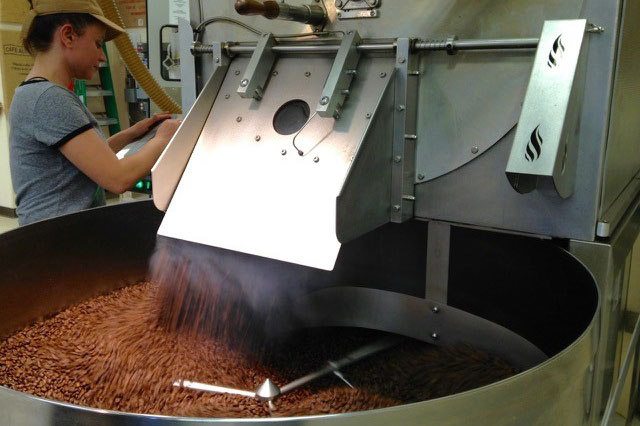
by Kelsey Price | Apr 18, 2019 | Captive Insurance, Financial Services, News
Governor Phil Scott today signed new legislation into law strengthening Vermont’s captive regulation in a variety of areas. This year’s bill proposed several updates to Vermont’s leading captive law, including modifications to the captive examination schedule and improvements to the statute governing group captive investments. The many enhancements included in this year’s bill highlight the commitment of the Scott Administration and the Legislature to ensure its captive law remains the industry gold standard.
“Part of what makes Vermont a leading domicile for captive insurance is our work to continuously modernize our regulations in this area,” said Governor Scott. “Captive insurance is a highly competitive sector and my Administration is pleased to continue to work collaboratively with the Legislature to ensure our captive law keeps pace with the fast-changing needs of the industry.”
Among the many updates included in this year’s captive bill are tweaks to Vermont’s captive examination schedule. The new law will change the schedule from once every three years (which can be extended to five years) to not less than every five years. The commissioner of DFR retains the authority to examine companies whenever deemed necessary.
“This will better reflect the state’s current practice of prioritizing examinations based on an assessment of the company’s risk,” said Deputy Commissioner of Captive Insurance Dave Provost. “I believe the captive industry will welcome this move, along with other updates included in the bill.”
Vermont’s new law also modernizes flexibility in investments by allowing companies the ability to either adhere to current investment rules or develop their own plan for approval by DFR.
“For certain captives, the old law required companies to follow prescriptive, often strict investment statutes,” said Director of Financial Services Ian Davis. “This move will allow Vermont statutes to keep pace with the rapid changes in the investment environment.”
“As we have for many years, we worked collaboratively with the Department of Financial Regulation to develop a consensus bill that will help grow our industry while maintaining our state’s prudent regulatory standards,” said President of the Vermont Captive Insurance Association Richard Smith. “We are grateful for the continued support from Governor Scott and that of the state legislature.”
Additional changes include clarifying the definition of an independent director, requiring National Association of Insurance Commissioners (NAIC) statutory accounting for affiliated reinsurance companies and a specific inclusion of sole proprietorships among eligible businesses to be cell participants. Importantly, the bill also allows captives to now use any organizational form permitted by Vermont law, ensuring the captive statute will automatically stay current when future changes occur.
A summary of the changes in the law include the following:
- Dividends & Distributions: Amends statute to clearly identify nonprofit incorporated protected cells as eligible for dividends or distributions with commissioner approval.
- Captive Formation: Allows captives to use any organizational form permitted by Vermont law. This includes sponsored cell captives and the incorporated cells within.
- Attorney-in-Fact Bond: Allows the commissioner to exempt the attorney-in-fact from the bonding requirements under specific circumstances.
- Examinations: Modifies the examination schedule to “five years or more frequently as needed.”
- Investments: Provides flexibility in investments by giving companies the option to develop their own investment plan for DFR approval.
- Sole Proprietorships: Specifically includes sole proprietorships as eligible business to be cell participants.
- Accounting Standards for Affiliated Reinsurance Companies (ARCs): Requires NAIC statutory accounting for ARCs.
- Risk Retention Groups (RRGs) Independent Directors: Clarifies the governance standards for risk retention groups, specifically the definition of Independent Director.
- Own Risk and Solvency Assessment (ORSA): Applies subchapter 7A of chapter 101 ORSA to RRGs.
For more information on Vermont’s captive industry, visit www.vermontcaptive.com.

by Kelsey Price | Apr 17, 2019 | Manufacturing, News, VTP, Workforce Training
BioTek, a Winooski-based life science instrumentation firm has been granted $96,887 from the State‘s Vermont Training Program.
BioTek will work with the Vermont Manufacturing Extension Center (VMEC) to develop and deliver the Lean Fundamentals (Lean 101) and Improving Workplace Communication curriculum. The first training will incorporate classroom, simulation, and selection of real opportunities faced by those diverse teams from BioTek. The second training will be utilized to help support and sustain improvement in communication, so a culture of collaboration emerges, and productivity can be enhanced.
“I am very excited that BioTek is working with VMEC. VMEC has shown continuous success in helping manufacturers innovate, plan, and grow,” said Joan Goldstein, Commissioner of the Department of Economic Development. “We believe that partnering with VMEC to improve its product and people will continue the success of Biotek in Vermont.”
VMEC focuses on the strategies, technologies, products, processes, and people to form solutions that allow businesses to reduce costs and become more competitive in the business climate. Manufacturing is the largest sector of Vermont’s economy, generating $1.89 of additional economic activity for each dollar spent. VMEC finds appropriate business solutions to provide significant client return on investment.
“We are thankful to the state for providing us this grant as it helped our employees be trained in various aspects of lean manufacturing; helping us compete globally while making it locally in Vermont,” said Amit Lodha, BioTek’s Director of Manufacturing.
With its headquarters in Winooski, BioTek has grown to be a premier business for life science instrumentation. Its products can be used for a variety of applications such as cell counting, histology, and cell proliferation. Starting in 1968, the company has shown sustained growth since 1982, when it introduced its first microplate reader. Today, the company has expanded and has opened offices in China, India, Singapore, Switzerland, and Canada. Working with many partners, it helps provide solutions in the area of drug discovery, clinical diagnostics, blood screening, and even veterinary medicine.

by Kelsey Price | Apr 15, 2019 | Consumer Goods, News, VTP, Workforce Training
Vermont Smoke & Cure, a Hinesburg-based maker of smoked meats and meat snacks in Vermont since 1962, was granted more than $15,000 in Vermont Training Program (VTP) funding. Vermont Smoke & Cure’s steady growth (30% annually) pushes toward the need for ten new hires as the company works to plan and create a second shift.
Employee training will include food systems, machine operations, and leadership training. Being a ready-to-eat meat facility adds additional risk and food safety requirements. Training will keep employees on top of best practices amidst the company’s rapid expansion.
“The Vermont Training Program has been integral in ensuring Vermont Smoke & Cure delivers top-notch on the job training, resulting in proficiency and promotion eligibility,” said Vermont Smoke & Cure CEO Tara Murphy. “We are also able to use the grant to train our employee-owners on key business metrics and how their role is critical to delivering on not only our production goals, but also our financial targets.”
Ultimately, the grant will allow the manufacturer to build their bench of employee skills internally and enable new operating teams to form and lead the company into the future.
“It is great to see a Vermont company, with such deep roots in the state, work to retain and promote employees through strengthening and retraining their current workforce,” said Agency of Commerce and Community Development Secretary Michael Schirling. “As employers seek more skilled workers, investing in their current employees can help foster growth as the state works to reverse our workforce declines.”

by Kelsey Price | Apr 12, 2019 | Aerospace & Aviation, Innovation, News
You’ve heard of electric vehicles, but have you heard of electric aviation? Beta Technologies, a solutions provider for energy storage, power conversion, thermal analysis, and electric propulsion technologies headquartered in South Burlington, is making huge advancements in the future of flight. Most recently, the company completed test flights with the largest electric aircraft to fly yet. Beta plans to attempt a cross country flight with the Ava XC from Kitty Hawk, NC to Santa Monica, CA as early as this spring.
Beta Technologies has been able to provide professional training to its employees for this work by using the Vermont Training Program. Recently the company received a Vermont Training Program grant to train 12 incumbent workers and 8 new employees for positions of aircraft design engineer, flight test engineer, and test pilot. These trainings included flight testers aviation safety course, ANSYS design software, and certificate trainings in aircraft hardware and software systems.
In addition to Beta Technologies, aerospace tech giants GE Aviation and Collins Aerospace call Vermont home. There are also more than 250 small and medium-sized enterprises based in Vermont that act as a supply chain hub for global aerospace and defense companies – all contributing to the state’s $2 billion aerospace industry.

by Kelsey Price | Apr 9, 2019 | Consumer Goods, Food & Beverage, News, VTP, Workforce Training
Vermont Coffee Company was recently awarded $20,000 in training funds from the Vermont Department of Economic Development’s Vermont Training Program. Vermont Coffee Company collaborated with Addison County Economic Development Corporation (ACEDC) to navigate the process and complete the application. The funding will primarily support vendor-led offsite/onsite employee training.
As a small business, Vermont Coffee Company’s management team indicates that access to training funds is crucial to their growth and development, elaborating that this grant will allow their small company to both broaden existing employee’s skills through professional development, certification, and cross-training as well as onboard new hires.
“We believe that investment in professional development for our employees creates loyalty, commitment, and opportunity for advancement. It promotes a healthy culture, which in turn fosters strong relationships with teams,” said Nicole Bartlett, Vermont Coffee Company General Manager. “Increased job skills lead to increased responsibilities and increased compensation. Access to these training funds will allow us to seek continuous improvements in lean manufacturing, train new roaster and finance personnel, and support prime leadership development for our emerging management team.”
“We welcome this workforce investment by the State,” said ACEDC Executive Director Fred Kenney. “It is great to see successful businesses like Vermont Coffee grow because of our partnership with them and their commitment to their employees.”
“The workforce of many of Vermont’s small businesses is often the most critical company asset; it is encouraging to see the recognition of this value and the resulting investment by this Addison County-based company,” said Joan Goldstein, Commissioner of the Vermont Department of Economic Development, which oversees the Vermont Training Program.





